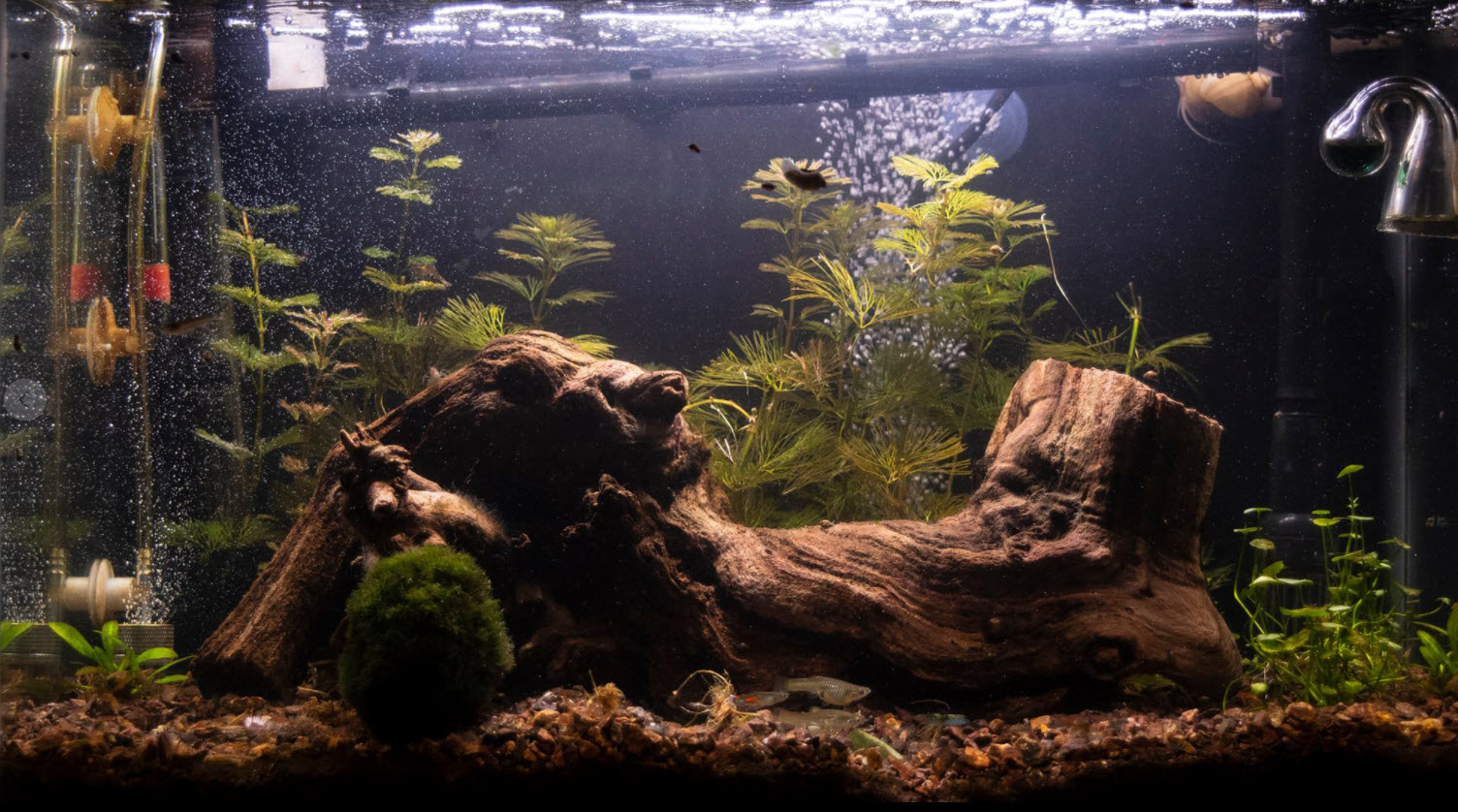
A “mature aquarium” (sometimes called a “seasoned aquarium” or a “balanced aquarium”) is an aquarium with a lot of diversity in the brown gunk in its filter, tank, and substrate. In a mature tank this brown gunk is full of tiny little organisms which are carnivores, eating other tiny organisms and food stuffs, including disease pathogens and dissolved organic compounds (carbohydrate DOCs, not humic DOCs) in the water column. This mass of “detritus” is a very complex ecosystem which ideally keeps the water in an aquarium free of pathogens and dissolved organic compounds.
ALL aquariums become “mature” because fish and plants that are added all have huge numbers of beneficial organisms on and in them. And a surprising number of organisms come in on the dust in the air. But it might take a year or two and there might be sizable gaps in the biodiversity.
The simplest way to rapidly (in months) get a mature aquarium is to simply add a SMALL amount (think a level teaspoon) of some pond mud and pond “dead stuff” (detritus) to ANY aquarium; with fish, without fish, with plants, without plants. And to simply wait. In a matter of weeks to a few months one will have a mature aquarium. A mature aquarium is typically a very healthy aquarium. To find out how to get this mature aquarium one can read on. As usual this deep dive is only for the dedicated aquarist.
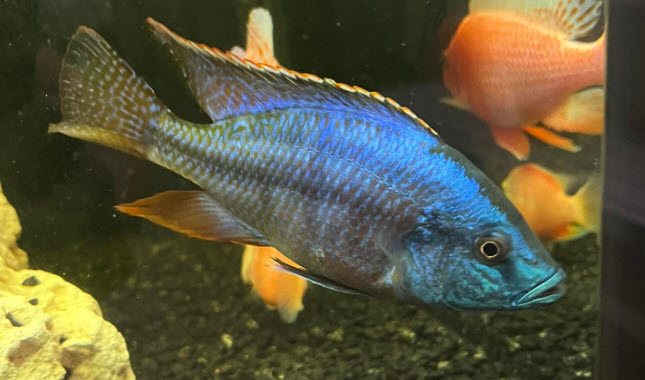
A Common Misconception
Because of a long history that has established that humans will have the least amount of disease in a very clean environment, we as humans have been conditioned to the idea that “Cleanliness is next to Godliness”. And we just naturally extend that thinking to our aquariums. The actual truth is much different.
Watery environments are different than air environments. If you sterilize a surface in an air environment it will typically have little in the way of bacteria on it for at least 12 hours. And even then it will only have small numbers of bacteria unless someone has touched it. If you “sterilize” the water in an aquarium with, say, a massive amount of UV, in an hour the water will have repopulated with the same number of bacteria as it had just an hour before. And all fish have most fish pathogens on their skin in what is called “non-pathogenic” numbers and you can’t “sterilize” them.
The “best” way to “sterilize” an aquarium is to make the FILTERS in an aquarium very “dirty” with a lot of diversity. This is exactly the opposite of what is needed in the air. How this works takes an understanding of the biology of the miniature ecosystem that is a “mature” aquarium.
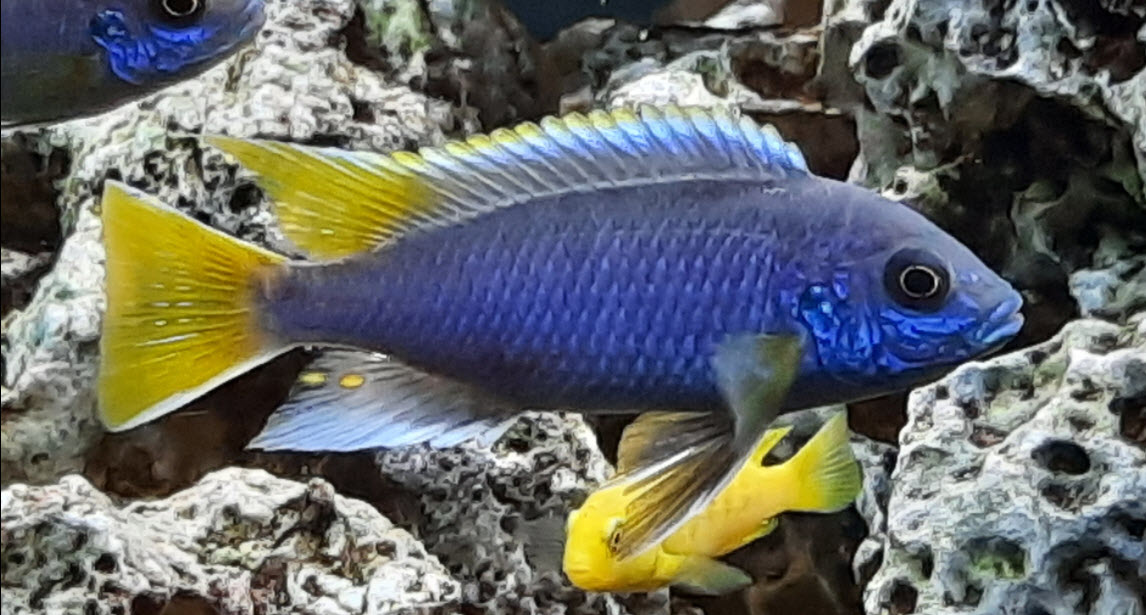
My Mature Tanks
When I first started my Florida aquariums 13 years back, I deliberately went out and obtained a level teaspoon of brown scum and mud from a local pond. I put it in my first tank along with soil from a potted plant, Black Kow composted cow manure, and a half-full jar of old K2 filter media (filled with wet brown gunk) I brought from Arizona. I did this to get something called “biodiversity” in my filter brown gunk. Biodiversity is the key to a stable healthy aquarium. The population of this brown gunk in this first aquarium filter has seeded all my subsequent aquarium filters.
One way to add this biodiversity is to put a teaspoon of pond mud (what I like!), soil from a potted plant or garden compost (NOT fresh manure!) in a sock (the type you put on your feet!). Put the sock in the filter inflow of the new tank and just leave it for a month or two. Easy! Or you can just add it all directly to the tank water. Or you can bury it in the substrate. In a month or two just take out the sock and you won’t even be able to tell you added anything. Just remember there are three things needed for a successful aquarium: patience, patience, and patience.
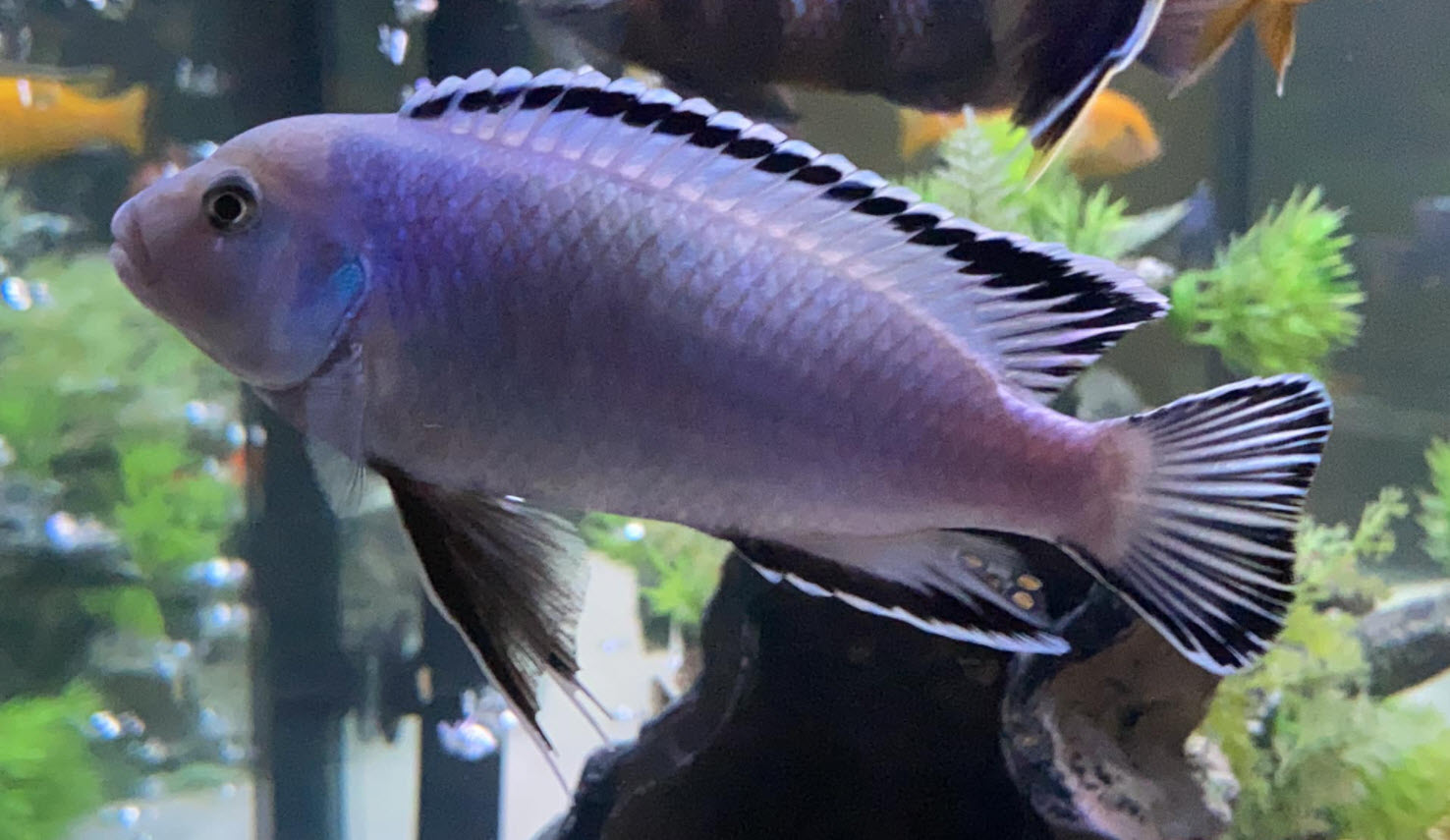
One of the best write-ups on this subject came from Swiss Tropicals, the supplier of Poret Foam. They said:
“The brown filter sludge in a filter is for the most part alive and not simply waste. Removing this mud does more harm than good. The purpose of the filter media is not to filter out particles from the water as is often assumed. The media serves as the habitat for a vast array of microorganisms that include bacteria, archaea, worms, ciliates, flagellates, and many others. These microorganisms live in a community that is based on biofilms. The biofilms are created by bacteria that secret extracellular polymeric substance (EPS), which is often called “slime”. The community forms a bioreactor that processes the waste and turns it into food and energy for its members, and ultimately into organic or inorganic products that are then used by plants, evaporate, or removed by water changes. It takes a considerable amount of time to establish this “filter community”; consequently, it is very important not to disturb it unless necessary.”
This is the best write-up any supplier of aquarium products has ever made. It is 100% true in all its claims.
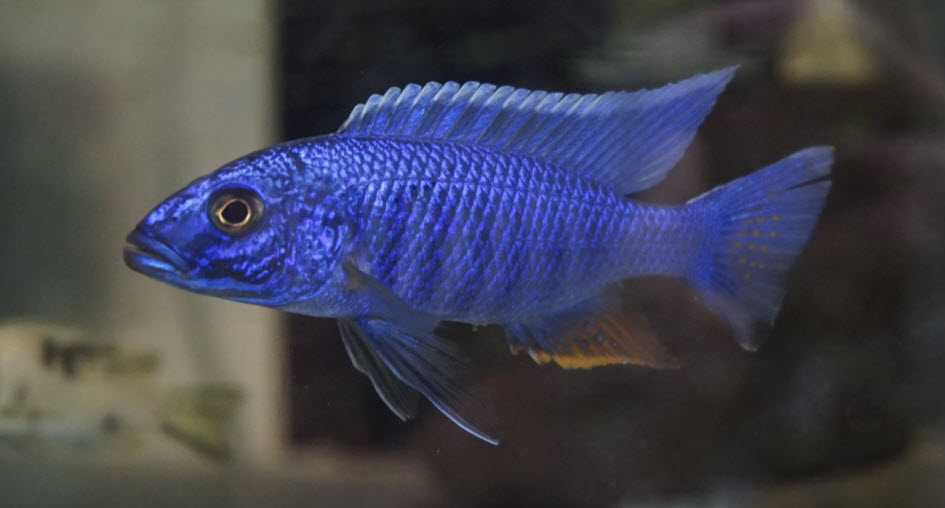
Father Fish Mature Aquariums
One YouTube video maker. Father Fish, uses pond mud in setting up his aquariums and has some excellent videos on why the “biodiversity” this creates is very good for any aquarium. I found his video after I wrote this article. He has been in the hobby for 70 years and uses pond mud! Gave me a sense of validation. Father Fish had a fish store with what appeared to be about one hundred deep sand bed aquariums filled with plants and fish. All of his tanks were extraordinarily healthy “ecosystems”. They were the very definition of “mature” aquariums.
Father fish has made several videos where he opinions that there are two distinct ways to be successful with aquariums:
- The very time consuming, very difficult, “sterile” environment where there are daily water changes, vacuuming and keeping everything as “dead” and sterile as possible.
- The “living” or “dirty” mature aquarium where there is detritus (.e. “dead stuff” which is actually VERY alive) and lots of diverse organisms keeping a “natural” biotope going. This type of aquarium is MUCH easier than the first type.
Father Fish is a big advocate of the second method and continually tells hobbyists it is a mistake to try and have a “clean” aquarium. Instead he advocates a mature aquarium with a lot of biodiversity and a lot of “dead stuff”. In my opinion Father Fish is 100% correct. Father Fish puts his “dead stuff” largely in his deep sand bed substrate. I put my “dead stuff” in the filters, including undergravel filters.
Here is one of Father Fish’s deep sand beds:
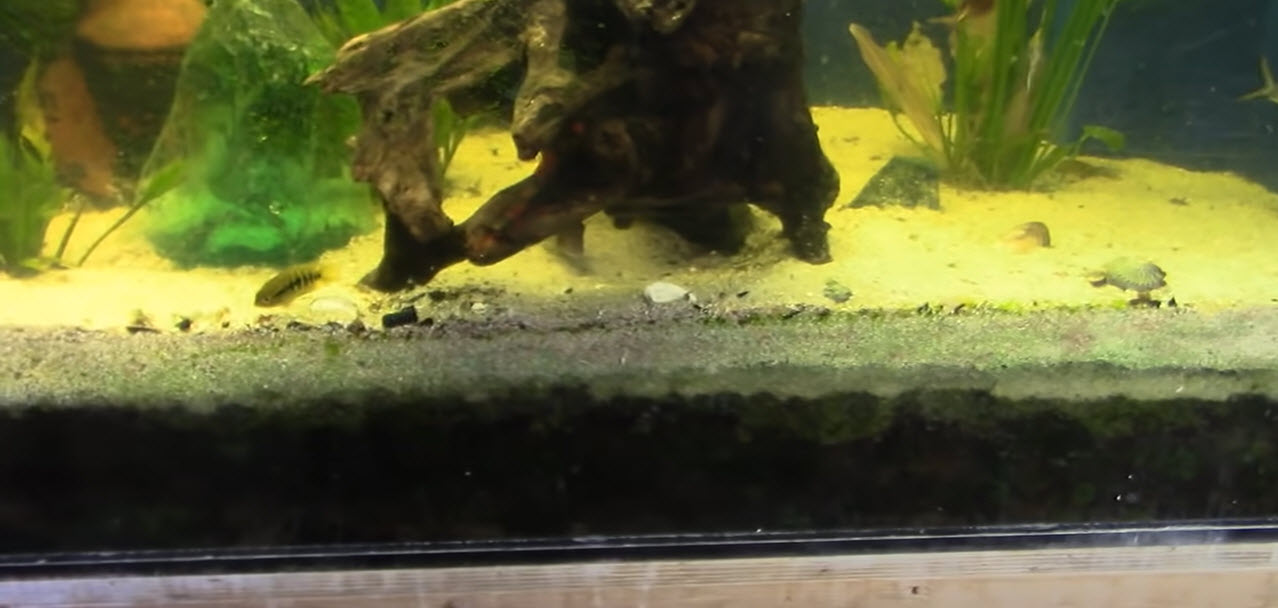
Father fish does create a mature aquarium (and simultaneously “cycles”) with a different methodology than I do. He heavily plants an aquarium (one plant per gallon), adds a few fish, then leaves it with the lights on for 24 hours a day for a month or two. His lighting is quite intense (1 watt LED per gallon). This works well for him. Just points out how flexible Mother Nature is.
Father Fish has recently varied his approach and now advocates handfuls of dead leaves for a new aquarium, either lying on the substrate or mixed into the top inch of substrate. I’ve had several readers now kill most of the fish in their tank using this approach. It is too much of a good thing. The excess dead leaves cause:
- The dissolved organic compounds (carbohydrate DOCs) to rise
- The biological oxygen demand (BOD) to rise
- The oxygen levels to drop, sometimes to the point where fish die
- The bacterial count of the water to rise precipitously
- The whole thing turns into a smelly cesspool
Think in terms of level teaspoons of inoculate, no matter what the inoculate.
Dan Hiteshew’s “Mature” Aquarium
Dan Hiteshew on his site “Everyday Fishkeeping” (a good YouTube channel) has one video on his tanks that is along the lines of “dirty tank equals healthy tank”. He gives the video with a tank behind him that could be any pond anywhere. It is full of brown detritus and dirt. AND it is full of some of the healthiest fish you will ever see.
Dan goes out and gets stuff like logs and rocks from his local pond and puts them directly into his tanks. This gives him a very healthy “bio fauna” in his tanks. This “bio fauna” might look very “dirty” but it is very healthy for the fish. Here’s Dan and his very healthy yet decidedly “dirty” aquarium (sorry for the glint off the head, I wish Dan would powder that noggin. Note after I wrote this Dan started covering his head with a cloth. Thanks Dan! I was just joking!):
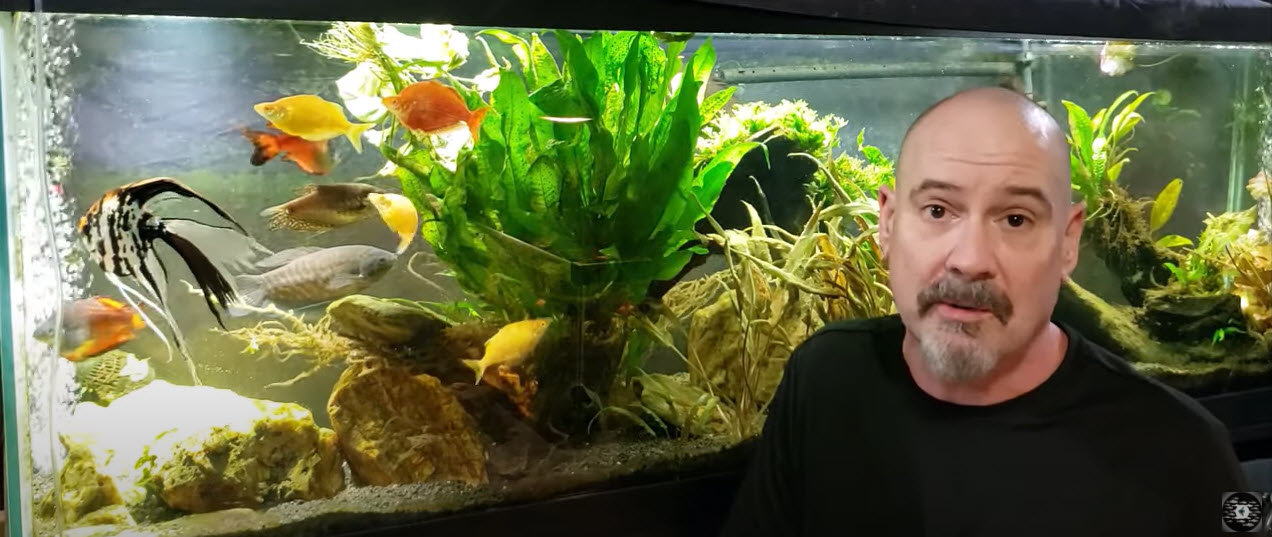
Dan does the “dirty work” directly in his aquarium, largely on his plants and in detritus. I prefer to do the “dirty work” in the filter. Either way will work just fine as Mother Nature is very flexible.
Filtration in the Mature Aquarium
Note that aquariums such as Hiteshew’s or Father Fish’s which do not use conventional filters and filter media to do the majority of their biofiltration use the detritus, plant surfaces, and/or deep sandbeds to do the filtration.
But doing the biofiltration with detritus, plant surfaces, and/or deep sandbeds seems to result in very healthy fish. Again, this just points out that Mother Nature is VERY flexible. It is only when Mother Nature is cleaned out of an aquarium and a filter that problems arise.
Note that for both the Father Fish and Dan Hiteshew aquariums I would add a ton of biofiltration. Either a large canister filled with pot scrubbers or a sump filled with fluidized K1. I’m just a huge believer in over-filtration in ALL aquariums. Note that both the Father Fish and Dan’s aquariums would require careful baffling of the filter pump output to keep the surface agitation down. This keeps the plants healthy.
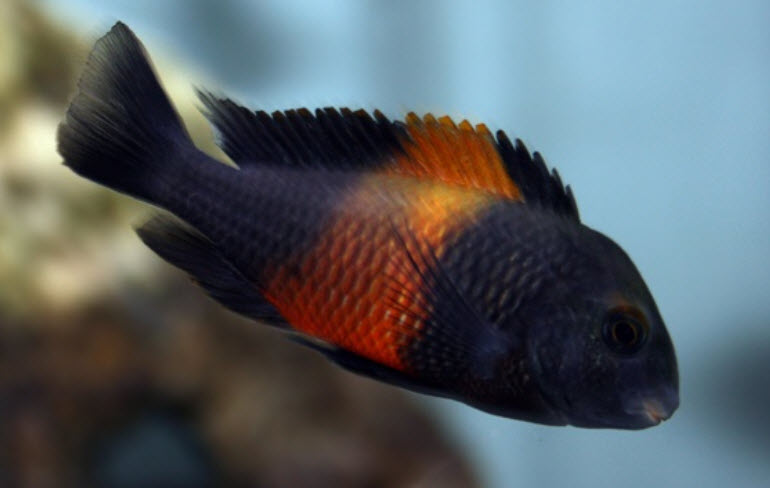
Using Pond Mud
It is optimum to inoculate the aquarium with pond mud, garden soil, soil from a potted plant, mushroom compost, manure compost, worm castings, and/or brown gunk from an established aquarium. Per the book “Biology of Plants”, by Raven et. al. 1992, a single gram of soil (one-fifth teaspoon) may contain 2.5 billion bacteria of several thousand species, 400,000 fungi of 200 species, 50,000 algae of 500 species, 30,000 protozoans of 400 species and 5,000 metazoans of 50 different species. A gram of pond mud will have a very similar population.
And some of the newer research using DNA analysis says that these numbers are UNDERSTATED by a factor of ten. Almost ALL of these organisms are very beneficial in an aquarium. The few organisms which are not beneficial will be easily controlled by the other inhabitants.
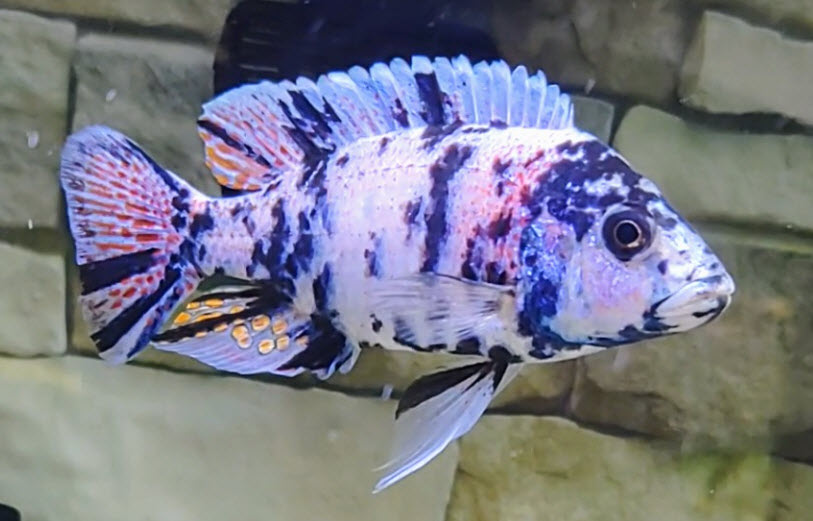
This beneficial biodiversity will include hundreds of species of single-celled protozoa carnivores like ciliates and rotifers and similar animal meiofauna (~1,000 cells in size) like gastrotrichs, flagellates and things like tardigrades (water bears), And the population of organisms in the mud will include some slower multiplying metazoans (larger multiple celled organisms) like annelid worms (think tiny brown or white earthworms), tiny flatworms, crustaceans (copepods, ostracods, etc.).
These metazoan carnivores can take months to get to beneficial populations. The populations of this little community of protozoans and metazoans will take additional months to “even out” and become stable. When it becomes stable it will do a VERY good job of stabilizing the health of the aquarium.
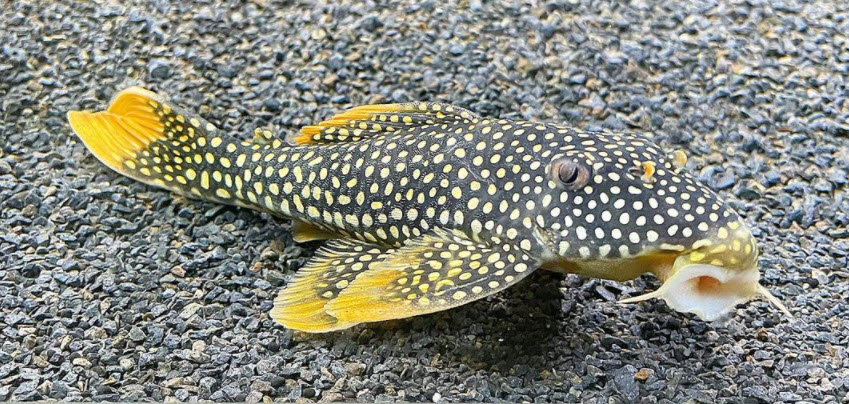
Protists
The pond mud I used to set up my first filter in a new location had a whole lot of what some call “protists”. These are small microscopic single celled organisms like ciliates, and flagellates. There are very similar microscopic meiofauna consisting of roughly 1000 cells (gastrotrichs, flagellates, etc.). These very small organisms eat other very small organisms which float by in the water flow. Here are some typical protists and meiofauna (magnified several hundred times):
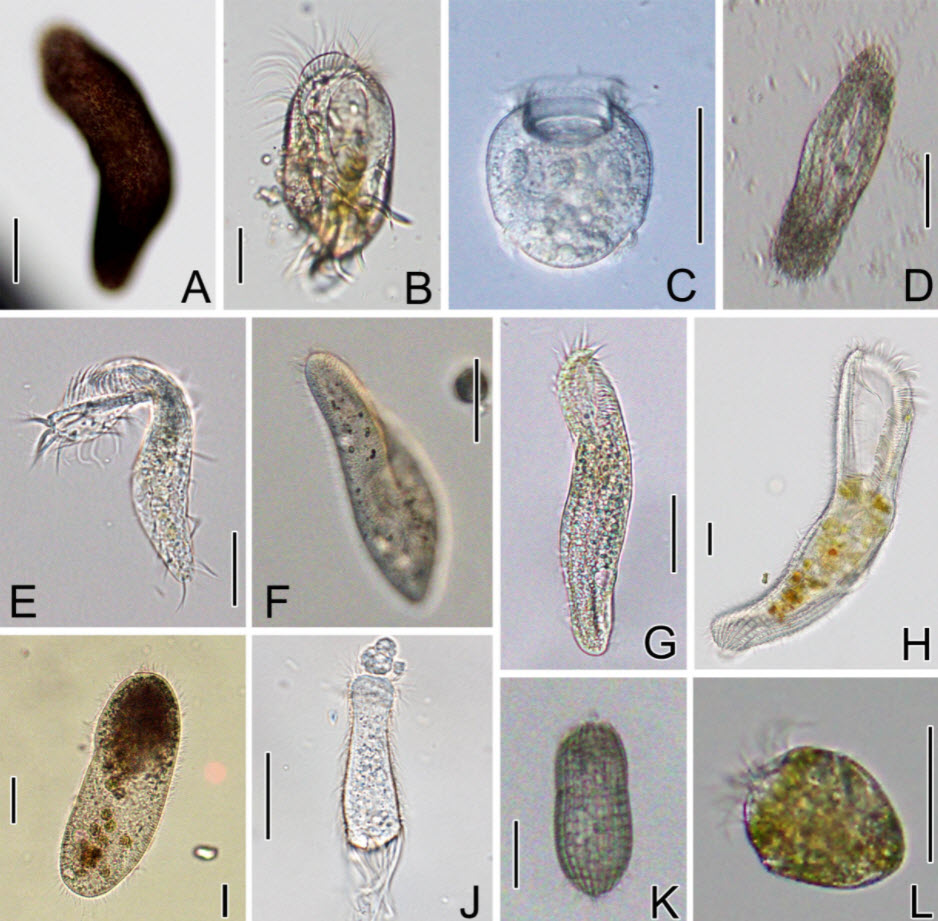
These protists and meiofauna are very important in keeping the aquarium healthy. They literally “eat” disease organisms and thus control disease outbreaks. These protists are all what are known as “heterotrophic organisms”. The term “heterotrophic” simply means “eats normal food”, i.e. proteins, carbohydrates and fats.
Heterotrophic bacteria in the filter also benefit the aquarium by eating the dissolved organic compounds (DOCs). If these DOCs are not eaten by bacteria in the filter they will feed pathogenic and detrimental bacteria in the water column and give diseased fish.
Heterotrophic Filter Organisms
“Heterotrophic” means an organism which eats normal foods, like carbohydrates, proteins, plants and animal matter. What aquarists call “beneficial bacteria” are “autotrophic” organisms which eat chemicals like ammonia. All the little heterotrophic organisms, from bacteria to worms, residing in a filter will be good for an aquarium, not bad. To get some idea of their impact, this graph is easy to conceptualize:
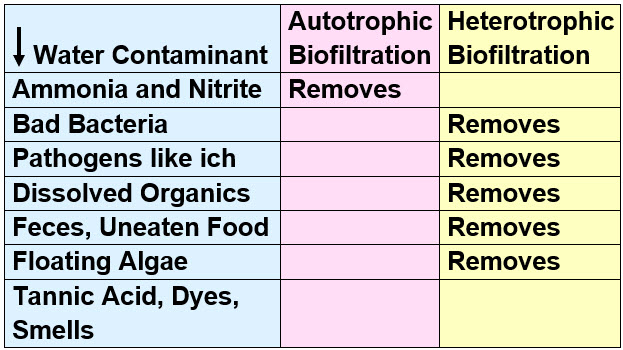
Both autotrophic and heterotrophic filtration is important. This is why “brown gunk” is so important.
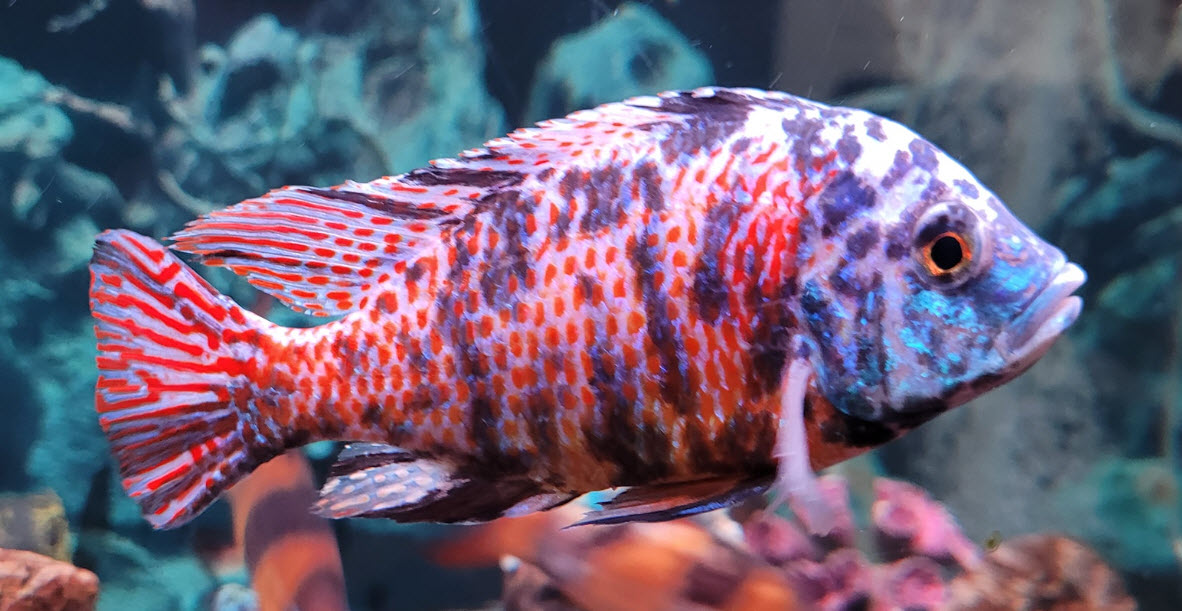
An Idealized Aquarium “Ecosystem”
To illustrate this “mature aquarium” concept in action let us set up an idealized disease outbreak in an idealized “mature aquarium”. For example, let us say you have an ich infection starting from a new fish and the ich organism has multiplied rapidly to produce a heavy concentration of ich trophonts in the aquarium water. Note trophonts are the tiny infectious stages of the ich. The trophonts swim around the water column hunting for fish to latch onto.
In our idealized mature setup, say there is a type of rotifer that loves to eat ich trophonts called “Beasty”. The “Beasties” are attached to the surface of the brown gunk in our filter via small stalks. They have a whole bunch of waving arms that catch the ich trophonts as the contaminated water flows over the surface of the filter media.
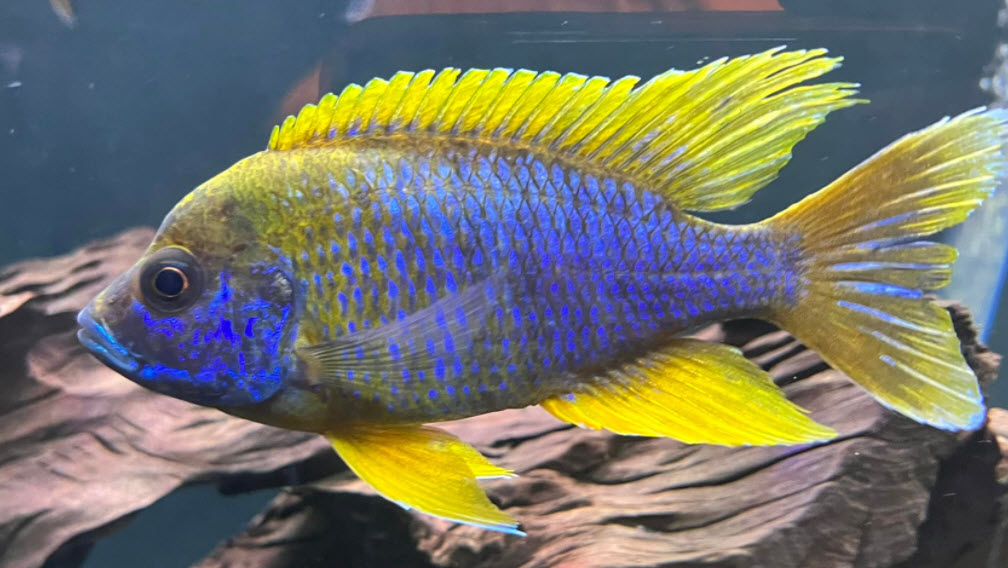
“Beasty” is found in pond mud. Because we have used some pond mud in our initial aquarium setup, we have a few “Beasties” here and there in the brown gunk in our filters. These “Beasties” start avidly feeding on the trophonts.
“Beasties” can’t multiply as fast as the ich organism can. So initially there aren’t many “Beasties” and the ich infection can get going. But then the “Beasties” start multiplying, and they catch up with the ich and overtake it. The new wave of “Beasties” eats all the ich trophonts and the ich infestation stops.
If we hadn’t added the pond mud to our filters, we wouldn’t have had any “Beasties” and we wouldn’t have stopped the ich infestation. This is why biodiversity is so important. It is Mother Nature’s way of stopping infections and preventing things from getting “out of whack”. Think of biodiversity in the filter and/or in the aquarium as being Mother Nature’s buffer system.
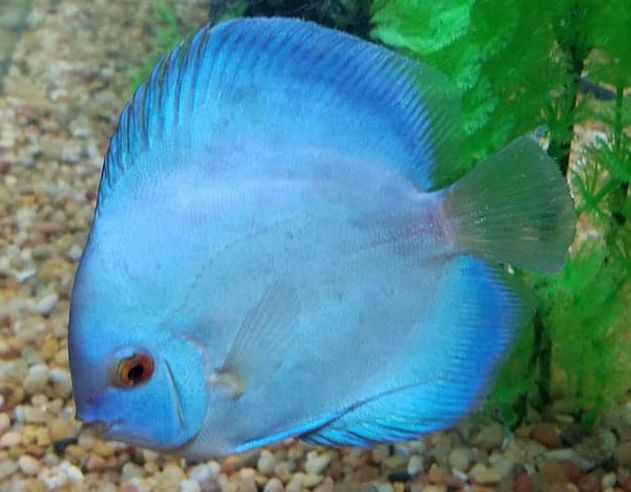
Fish Pathogens
Many studies have looked at fish pathogens on the skin and gills and in the intestines and organs of fish. Diana Walstad did a review of many of the studies. These studies ALL showed that easily all fish have about 50% of the known pathogens of fish on or in their bodies even though they appear healthy. So the chance that a fish might have a fish pathogen like flukes, capillaria or epistylis is say 50%. But a fish will have only a very few organisms on or in its body that control these pathogens. The fish does the controlling of the pathogens through its immune system.
Now pond mud might well have some fish pathogens in it. Say that probability is also 50%. What many miss is that that pond mud will also have a whole bunch of various carnivorous organisms which can control an outbreak of that pathogen. The probability of that occurring is very high, like 99%.
So a population of fish in a new tank without a mud-inoculated filter has a very good chance of having a disease outbreak if the fish become overly stressed. In a mature tank that has developed a healthy population of various carnivorous micro-organisms, the likelihood of such a disease outbreak is MUCH less. This is a very difficult concept for humans to understand. Namely that “dirty” is often “better” in the aquarium.
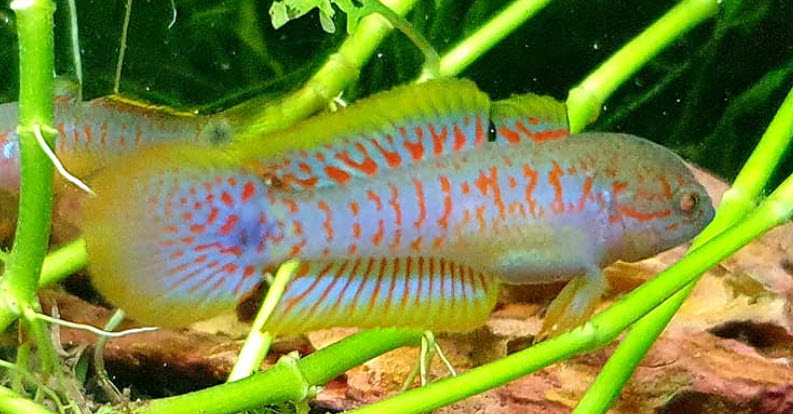
Setting Up the Mature Aquarium
It takes time and patience to set up a mature “fish only” aquarium. I normally think along the lines of three to four months before the tank is fully “mature”. It is important to get some pond mud, filter gunk from another aquarium, soil from a potted plant, compost, and/or aquarium plants into the picture early. Pond mud is by far the best. A chunk of wood or even a wet stone from a local pond or stream is great. These inoculate will allow a filter to become filled with lots of little beneficial organisms.
My personal preference is to cycle and mature an aquarium without fish in the aquarium. But there is nothing wrong with cycling and maturing with fish in the tank. After the aquarium has “cycled” (ammonia and nitrite are zero) I do the following:
- Measure pH and ammonia at the start of every week. I only do measurements once a week. Test kits can get expensive. Note this is NOT a necessity. I only do it to track my progress.
- Every day add one-quarter gram (one level eighth teaspoon, 0.5 ppm) ammonium chloride (or any other ammonium salt) per fifty gallons if the ammonia level is less than 4 ppm at the start of the week. Only make one add per day and ignore where the ammonia lands till the end of the week. Do not do this add if there are fish in the tank as this can stress the fish.
- Every day add one level teaspoon per 50 gallons of high protein hydrated food. I use crushed fish filet but crushed whole shrimp will work. I limit the hydrated food to fish or shrimp because beef or pork isn’t in a form I like to add to the aquarium and has too much fat. One fourth level teaspoon per fifty gallons of any commercial dry food with a protein level over 45% will also work. Do this regardless of the ammonia level. Do not do this add if there are fish in the tank as this can stress the fish. If there are fish simply feed the fish lightly with any food.
- In a fish only tank turn on the lights 24/7 to develop as much algae as possible in the aquarium. If the aquarium water turns green I just ignore it. It will clear in a few weeks. If you want a planted tank but have not added the plants, do not turn on the lights. Instead black out the aquarium with a dark blanket for the maturation period. Alternatively one can go ahead and plant the tank and leave the lights on for five hours per day.
- Keep the pH above 7.4 by adding sodium bicarbonate (baking soda) when the pH drops
- Do not change the water regardless of nitrate levels.
- Do this process for a minimum of two months without fish and four months with fish, starting after the tank is cycled.
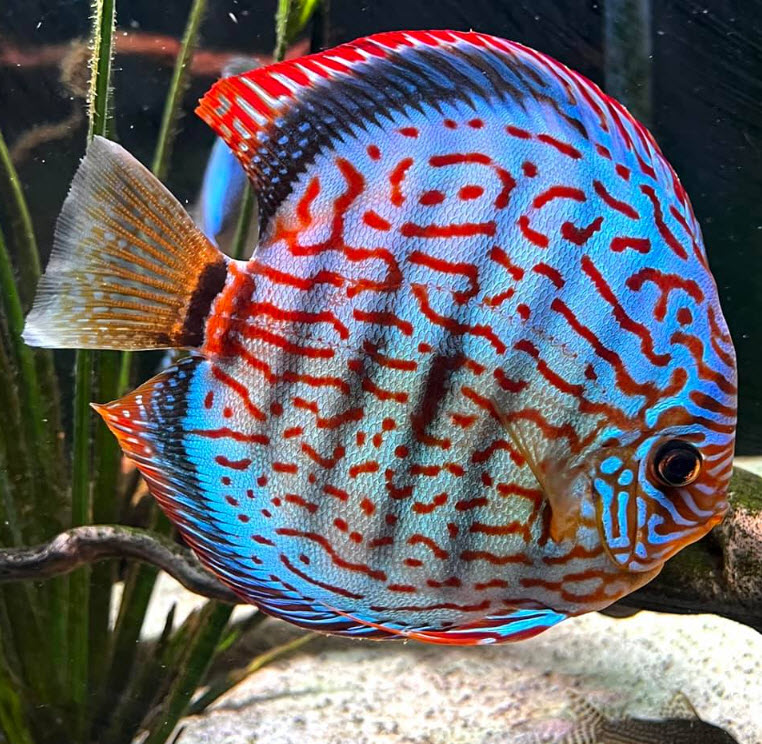
The food adds dissolve organic compounds to the water. These in turn feed heterotrophic bacteria. These bacteria feed rotifers and ciliated organisms in the filter. It is all part of trying to get a diverse ecology in a mature aquarium. This is all so I get a “mature” aquarium with a thick layer of brown gunk in the filter and a lot of algae (for a planted tank you want no algae).
Not this loading is for my VERY heavily filtered aquariums with good filter media (pot scrubbers, foam or K1). If one has an aquarium being filtered by an internal or hang-on-back cartridge filter the loading will need to be cut by 75% to 90%. A canister filled with ceramic rings might need to be cut by 50%. Some filters and some filter media can be overloaded and a cesspool will result.
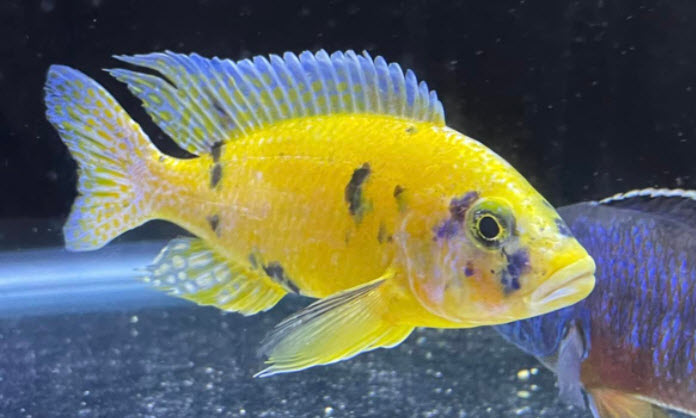
This maturation process also gives me crystal clear water. Crystal clear water is bacteria-free water. And bacteria-free water ensures that fish remain healthy when they are added to the aquarium. A “mature” aquarium is a very stable and very healthy miniature ecosystem. The more brown gunk in the filter and the more algae one has, the more stable the aquarium ecosystem.
Note that many wonder what happens when brown gunk or algae die. Technically, while bacteria in brown gunk and algae do die, the dead organisms are always eaten and absorbed immediately by other organisms which are just as beneficial to the ecosystem. So, in a well-aerated aquarium, dying algae and brown gunk do not harm anything. The process is just part of a healthy ecosystem.
I do not vacuum the gravel (I use under gravel filters in all but my quarantine tanks). I also do not clean the filters unless they are plugged up.
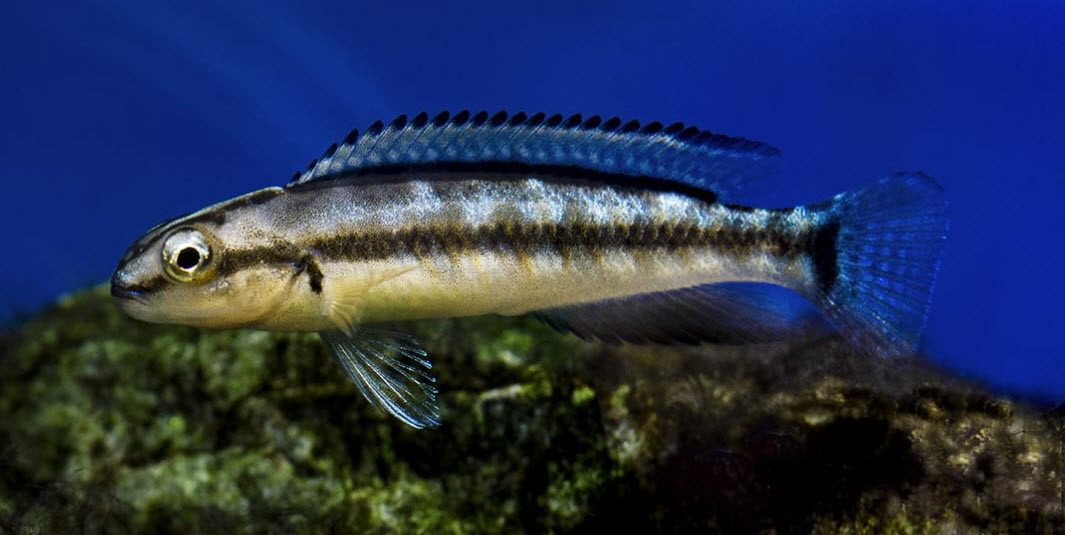
Lighting
I always like to have the back wall of any aquarium where I have fish or shrimp be a wall of thick, lush algae. Most fish and shrimp will “graze” this wall. The carnivores will pick out little crustaceans while the omnivores (most fish are omnivores!) will eat both the algae and the little crustaceans. Developing this algae wall requires the light being on. I just leave it on 24 hours a day.
Note that this maturation process is for aquariums which are largely fish aquariums. Heavily planted aquariums require slightly different approaches, depending on what their substrate is and what type of planted aquarium they are. Generally, an aquarium that is to be planted in the future should be covered in black plastic with no lights at all for the maturation period. This way algae do not get a “leg up” on vascular plants. When ready, remove the black plastic, add the plants and leave the lights on for five hours per day initially.
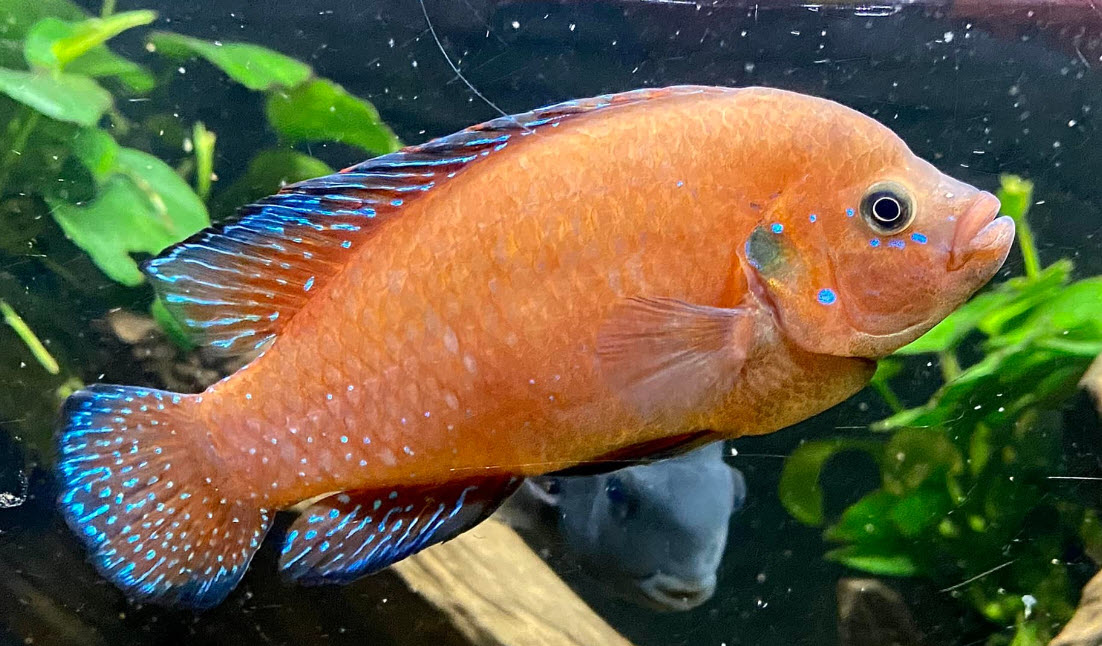
Too Much of a Good Thing
Of course, it is always possible to overdo a good thing. You do not want your aquariums to become a cesspool. A level teaspoon of pond mud. Small additions of food. Lots of aeration. Patience, patience, and more patience. If you have bottom feeders like loaches, goldfish, and corydoras, avoid getting a buildup of mulm either above or in the substrate. In very heavily stocked commercial fish ponds they need to clean the top of the pond bottom every year to keep the fish healthy. The mulm just gets too thick and starts getting hypoxic pockets, which is not good.
And if one plans on having a shrimp tank, approach the pond mud with a prophylactic approach. Add praziquantel (preferred) and/or fenbendazole to the water once a week for a minimum of three weeks before adding any shrimp. This is to kill planaria. Planaria are a death sentence for most shrimp colonies so I try to make sure none get introduced.
If you are in Asia where the Asian Leech is present naturally, one will want to treat with fenbendazole every two weeks for at least two months to prevent this leech from getting a foothold.
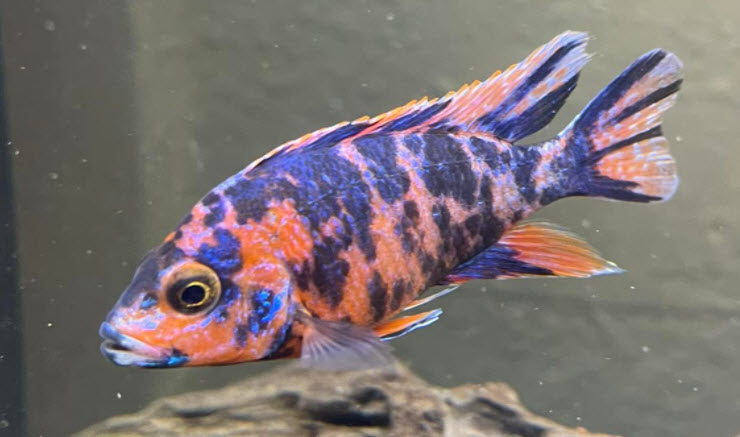
Common Myths
There are a lot of myths that come about because of the time it takes for a mature aquarium to get into gear and start working. For instance, one forum member allowed that for the first three months of his aquarium set up he was only doing a 25% water change every two weeks. And he had a lot of disease and deaths. So, at three months time, he switched over to 50% water changes every week and his disease problems went away. So, obviously, you need to do a 50% water change once a week for a healthy aquarium.
“Correlation does not imply causation”. What actually happened was his aquarium simply became mature and began handling the disease pathogens. It had nothing to do with the water changes. There are a whole host of myths that started like this.
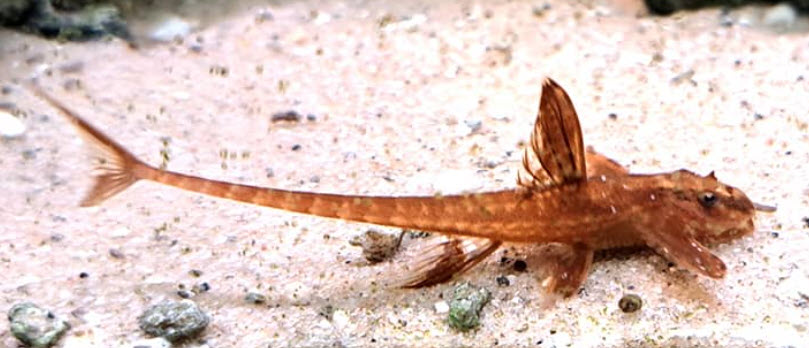
The Science in More Depth
Creating a mature tank is closely related to cycling an aquarium. There is a lot of science behind cycling for those who are curious. This science is reviewed in the following links:
2.10. The Nitrogen Cycle
2.11. Inoculate for Cycling
2.12. Beneficial Bacteria
The topic of biofiltration, a mature aquarium, and cycling are all closely related. So if one is interested in delving deep into the science and the calculations behind all aspects of filtration the following is pertinent:
6.2. Biofiltration
6.2.1. Detritus Explained
6.2.2. Brown Gunk
6.2.3. Cloudy Water
.
Return to Cycling Menu
.
Aquarium Science Website
The chapters shown below or on the right side in maroon lead to close to 400 articles on all aspects of keeping a freshwater aquarium. These articles have NO links to profit-making sites and are thus unbiased in their recommendations, unlike all the for-profit sites you will find with Google. Bookmark and browse!
.

Christie Miller says
Good. I’ll let the biofilm keep cooking undisturbed. Thanks for the reply!
Dave says
In reply to Christie ……. It is virtually impossible to “choke” an undergravel filter so don’t worry about the brown mulm.
Christie says
Hey Dave,
Thanks for posting all this nerdy stuff, it has helped me cut through the din of message boards, YouTube aquascapers, and advertising. After a less than successful contrasoil start a year ago, I found your website, read though several of your posts and decided to ditch the contrasoil and go down a less high tech road as a newbie. I currently have a 4 month old, 1tsp pond mud seeded, 10 gal with uncleaned filters (2-3″ gravel substrate with UGF + 2 sponge-packed hobs). During these 4 months I’ve grown and killed ez plants at almost equal rates (anubias, java moss, and java fern). I’ve overfed protein poor food to my fish (a community of 12 nano sized), and then probably overfed protein rich food. About 2 months ago I added a air driven sponge filter, kept reading and tinkering with the amount I was feeding, and have got to the point that I think I’m adequately, but not overly, feeding plants and fish. I haven’t lost a fish in several months, and my plants are showing net growth and are looking better. Which leads to my question.
Since the biological filtration is still developing slowly and in a relatively unmanaged way, I’m wondering about my UGF. Currently the area underneath the plenum is full of brown gunk. I can’t decide if this is good or if I created a borderline cesspool due to my feeding adventures. No mulm accumulates on top of the gravel. Water still flows out of both UGF uplifts, but I couldn’t say if it has slowed or not as I didn’t note flow when I first set it up. My water is less cloudy, but never has been crystal clear. I currently do not have a ton of algae, but there is some and there has been a progression of different species/amounts over the months. I think I just need to continue to leave the UGF alone, but can’t shake the idea that I choked the UGF system.
As a newbie, I greatly appreciate your freely shared knowledge. Cheers!
Aimee says
Hiya Dave!
I am a zoologist and an avid aquarist and I absolutely love your articles.
I wanted to add a note that rotifers and gastrotrichs are not protists but animals! They are both app. 1000 cells large and each belong to their own phylum. They are both classed as meiofauna, like copepods and tardigrades.
I love the idea of having a dedicated section of a sump for meiofauna and protist habitat! I’m already planning mine for my next setup (800 litres wish me luck!).
Robert says
Thought I replied yesterday but think I didn’t go through, thanks a lot Dave!
Dave says
In reply to Robert ….. I would add everything (five leaves only) to the aquarium and then let it balance itself out. The water, mud, leaves and sand all will have different biodiversity. Just don’t add too much of any one thing.
Robert says
Hi Dave, thanks a lot!
Regarding the pond mud, I went up hill near my home yesterday and I could only find the river without the end of it (a pond? Or ocean?), so what I could get was some mud at the bottom of a tree near to the road and some more mud right next to the river. In the river it was all sand without any mud, which I also collected some just in case, will that do too?
I collected a tiny bottle of the mud and a jar of river water with some fallen leaves and sand from the river, so I add the mud directly to the water in my tank and just wait? A teaspoon at the most I suppose? And throw away the water, leaves and sand?
Thanks again!
Dave says
In reply to Robert ……. Hole in the head followed by bloating is a tough nut to crack. I would NOT add leaves. Just a level teaspoon of pond mud. And I don’t like the way Father Fish has “gone overboard” with his resurrection jar. It is too much of a good thing. Add as much filtration as you can and see how it goes. And don’t worry about predatory creatures.
Foam is as good as static K1 so I would only replace the bioballs and ceramics. Leave the foam in the Eheim (both white and blue).
Robert says
Hello Dave, greetings from Hong Kong!
Not sure if I’m qualified as a “nerd” but I enjoy reading your articles a lot! And I have a few questions that I would like to share. Many thanks in advance!
I used to keep fish for a year or so back in 2018 and recently picked up the hobby again last year, mainly keeping apistogramma (sp. elizabethae to be precise) and I think something went quite wrong.
Started keeping a paid last March (60cm x 30cm x 36cm) with an Eheim compact + bio balls and Eden 501 (also bio balls), plus a sponge filter for extra filtration and aeration, used RO water and added dried leaves occasionally, ph at around 5-6, tds around 50-100.
Managed to reproduce in May, about 40 fry grew up successfully, kept one for my own and sold others (really didn’t want to but I had no extra space), kept in another 30cm square tank with a sponge filter only.
Around March this year, the female mother died with unknown course, not long after, the male had holes in the head, not many days after heavy bloating then passed. Read articles on this and most suggested bad water quality was the main course, internal parasite being the next. Didn’t have the concept of “crystal clear” water then, thought the water was fine and decided internal parasite was the reason. Moved the grown fry to the main tank and about a month later he had exactly the same symptoms as the father, holes in the head at first, then bloating a week after and passed very soon after. I am still really sad and regret that I didn’t know enough to keep them healthy.
And recently I have been moving home so I had to restart the aquarium and as I did, I came across your articles and thought that it’s a really good opportunities to have a fresh restart. The tank has been reset with the old filters (with bio balls and little “brown gunk”), I think most of the bacteria survived the few hours without water flow? And ran a fishless recycle for about 2 weeks now (the fish have been kept in the 30cm square tank without any substrate), unfortunately I discovered your articles just a week after the reset, otherwise I would have done it in a different way.
The tank has been reset (roughly on 26th May) with the same 2 filters and a new sponge filter, ADA Colorado sand as substrate, some large rocks as main aquascape with a few driftwoods and no fish. The water turned cloudy the day after and started to turn clear after about a week and turned quite brown due to the driftwood. Added a little pinch of dried fish food for 2-3 times along the way, heavy hairy mould appeared on the woods and started to collapsed in about a week time. Did a 50% water change last night and moved the fish back in, and ran into this exact article last night and decided to add some pond mud from my neighbourhood at this relatively early stage, bought some K1 media planning to replace the Eheim filter first.
So my first question is that: is it correct if I’m planning to pour the water in the filter back in the tank, rinse the bio balls with RO water, throw away the bio balls and replace them with fresh K1 media, pour the rinsed RO water back in the filter, then add the teaspoon of pond mud into the filter, wait for several minute and restart the filter? I think it’s safe to do it while I leave the Eden 501 filter untouched for now then replace that too after say 1-2 months?
Regarding the pond mud, I also watched one of Father Fish’ videos on resurrection jar which I’m also planning to make. I think I got most things clear after your detailed article and don’t worry too much on the “bad” bacteria, however I’m still worried about parasite and other predatory creatures which would harm fish (dragonfly nymph for instance), is that not worth worry too?
Since the Eheim filter came with a piece of blue sponge (for biofiltration) and white sponge (for mechanical), do you still recommend to throw them away and go for 100% static K1 media instead?
Back to the Apisto, would you have any clue what caused the hole-in-the-head and subsequent bloating? I know it’s impossible to even provide an informed guess with so little info, I added some ADA aqua soil in one corner under the sand for the plants when I first started the tank, I was also keeping a few cardinal tetras and a few octocinclus catfish and they have been quite stable, ah, and also 2 handicapped fry from the spawn last May. Both deadly diseases only happened on the grown male Apisto and none other had this problem, not sure if the above information helps but would you have any guesses please?
My main goal at this moment is to increase the biodiversity of the tank to start with, I really enjoy watching the fish being happy in the tank for hours and don’t want to stay in the vicous circle of fish dying without knowing what causes it, I would do anything just to keep the fish healthy and happy. I really appreciate your help, I know the above is really lengthy, I hope you don’t mind, please let me know if I can add any info which could help. Thanks a lot!
Mark says
Thanks, that’s what I thought but just wanted to be sure.
Dave says
In reply to Mark …… Pond mud would be useless at this point in time.
Mark says
Reading about the mature tank you said all tanks mature on their own but may have gaps in bio diversity. My tanks have been running two and a half years at this location. I hadn’t heard anything about using pond mud when I started. I’ve put lots of things in my tanks like plants in pots and worm castings. I keep sponge filters running in my larger tanks just for starting new tanks. At this point would bringing in pond mud be helpful? My tanks all have UG filters and seem to be crystal clear.
Thanks, Mark
Dave says
In reply to Tom Nichols … By definition beneficial heterotrophic bacteria are attached in the filter media or the aquarium. So UV will have no direct effect on them
Tom Nichols says
David, what effect will a UV filter have on these heterotrophic critters? Are they the type that attaches to the filter media also, and therefore not in danger of being sterilized via the UV filter? Or, would the UV filter reduce the number of beneficial critters along with bad ones?
-Tom